REMIC FOR BOWED INSTRUMENTS
In a series of small articles, we invite you “behind the scene” at REMIC MICROPHONES, in order for us to share with you the latest innovations, knowledge of instrument specific close miking techniques and instrument acoustics.
This time, we will take a look at some of the most commonly asked questions and considerations, when it comes the usage of REMIC microphones for strings: Which model to chose and how to use it.
All data illustrated in this material are a sum of data obtained from a variety of studies of music instrument anatonomy obtained in both studio and live concert environments.
INSTRUMENT SPECIFIC MICROPHONES
Any model of the REMICs for bowed instruments has been designed as instrument specific microphones in order to capture the full sonic spectrum of the instrument and to suppress ambient noises in different ways.
The REMIC (RED) studio/live model has an omnidirectional polar pattern and a moderate level of ambient suppression. However, the REMIC studio/live model can also be used in live context, where the sound of the instruments has to be “lifted” just a bit. e.g amplification of a symphony orchestra, classical string quartets, ensembles or jazz.
The REMIC (GREEN) “LB” model has an angled figure eight polar pattern and is designed for “extremely loud” live performances, such as folk-rock, pop, rock and metal. It is designed to suppress a large amount of ambient noises and the polar pattern of this model mounted on the instrument is unidirectional and more specific: An angled figure eight within the reach of the soundboard area – outside this area the polar pattern becomes omnidirectional. This model is designed for live productions with high level of sound pressure on stage and has an astonishing high gain before feedback as well as extreme suppression of neighbor instruments and ambient noise.
Please note that the sound response of the “LB” models are more “dry” and “woodish” in comparison to the “Studio/Live” models due to their high ambient suppression factor, but the LB models can easily be EQ’ed for best results.
REMIC POLAR PATTERNS
The polar pattern of a microphone indicates its sensitivity to sound, relative to the direction or angle from which the sound arrives, in other words; how well the microphone “hears“ sound from different directions. The most common types of directionality are: Omnidirectional, cardioid and supercardioid.
REMIC STUDIO/LIVE MODEL
The REMIC Studio/Live model for violin, has an omnidirectional polar pattern. However, when mounted on the instrument (in this case a violin) the polar pattern becomes half spherical. The darker color on top of the instrument indicates that most of the instrument sound is captured of of this, the upper part).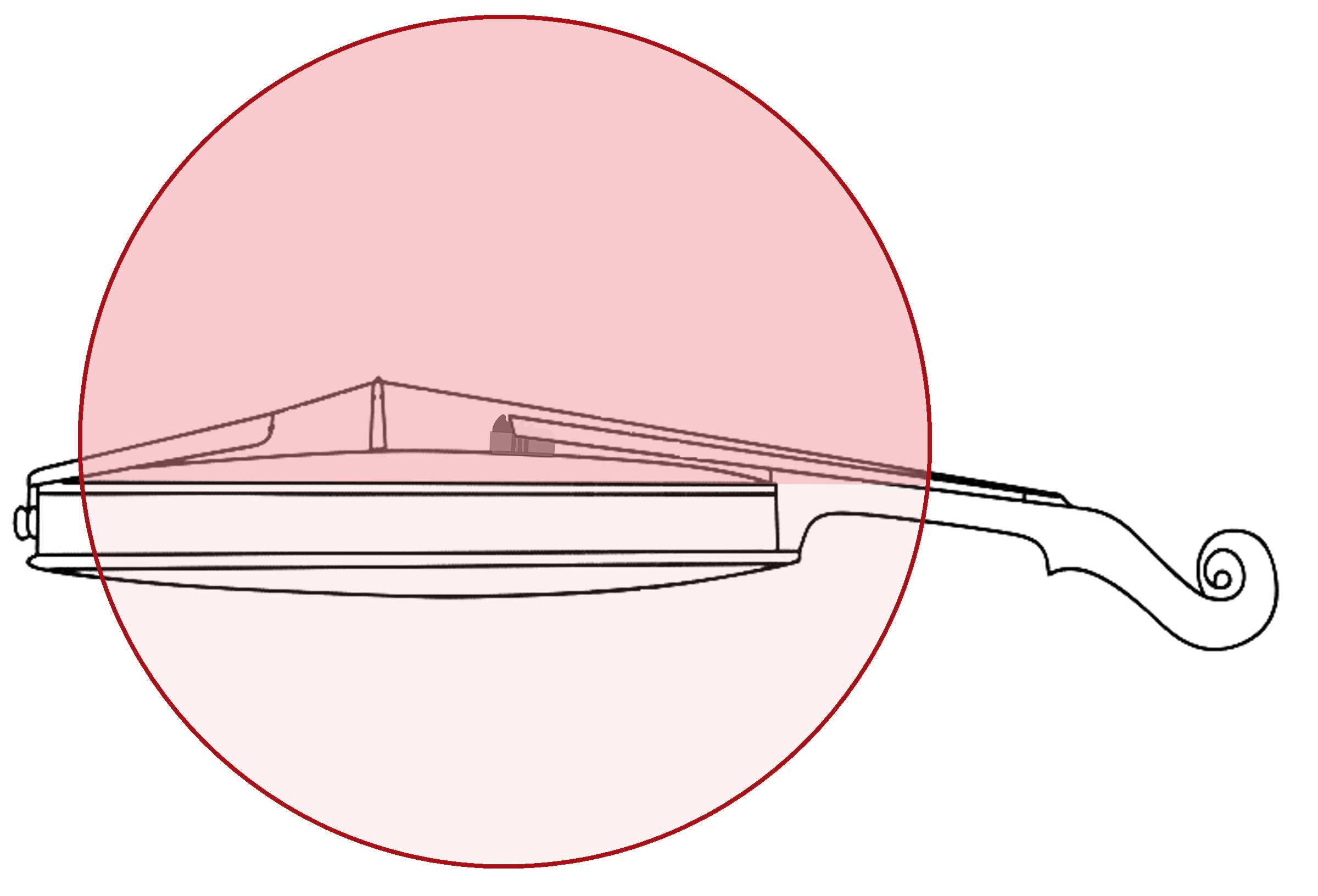
REMIC LB LIVE MODEL
The polar pattern of the REMIC “LB” Live (Extreme) model is an angled figure eight (in free air).
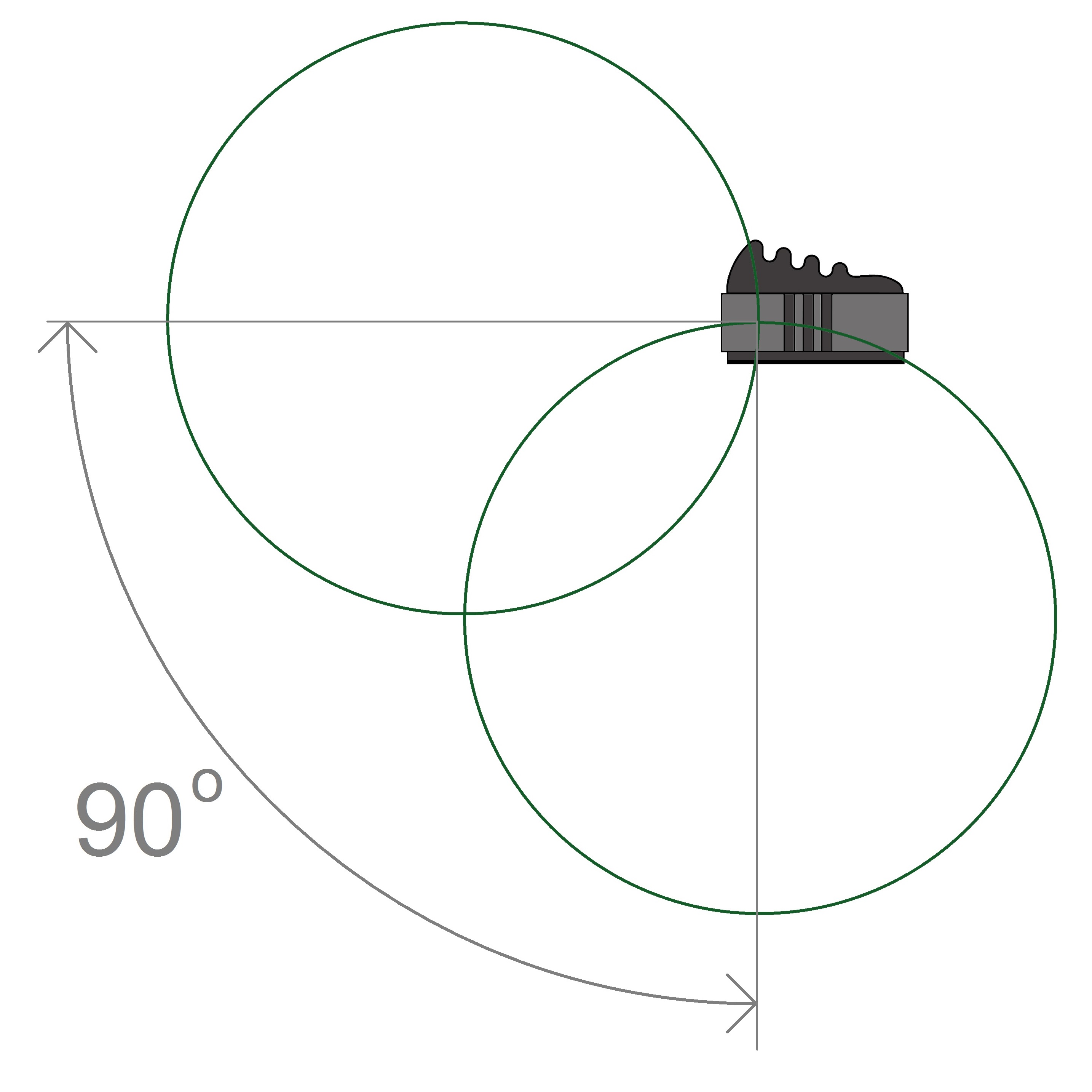
Mounted onto the instrument surface the polar pattern becomes two half spherical shapes.
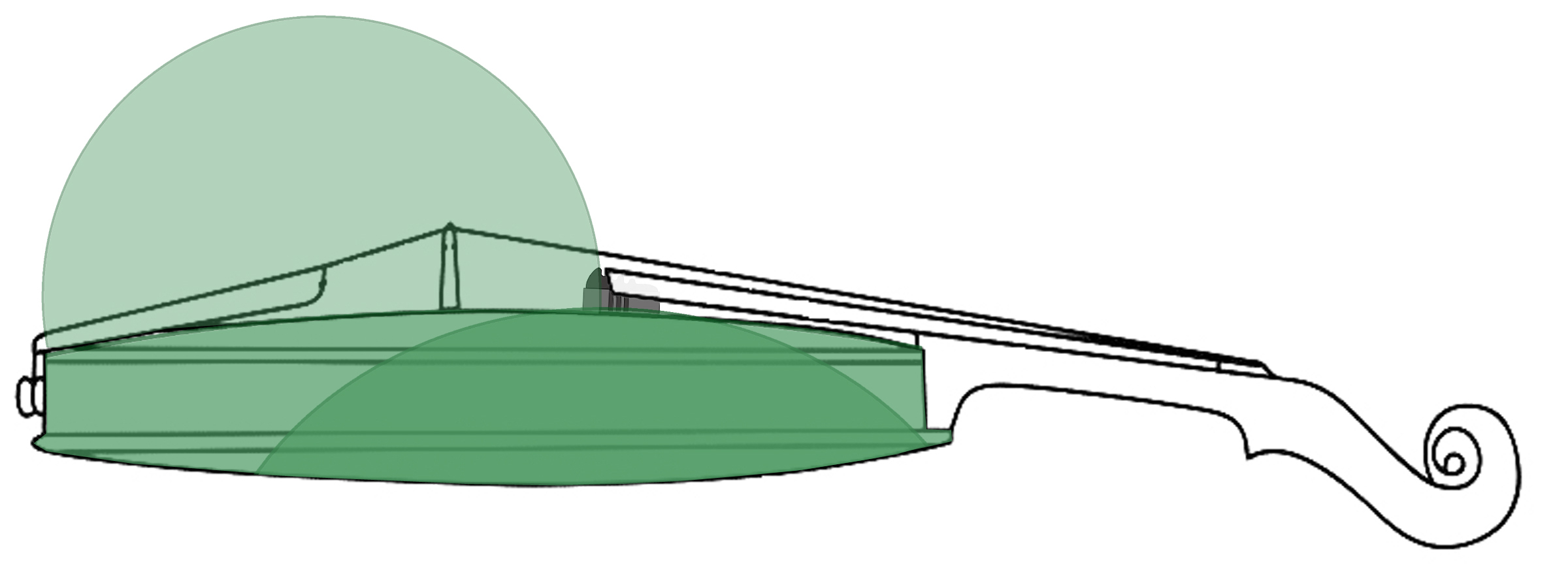
The front of the membrane of the REMIC “LB” model captures the movement of air molecules generated by the friction between strings and bow and the top of the soundboard (belly) of the instrument, (illustrated in light green).
The rear part of the membrane inside the REMIC “LB” model, captures the sound of the instrument by capturing the movement of air molecules from the soundboard only, via the acoustic channel ending up underneath the microphone. The darker green color illustrates the part of the violin of which the sound is captured by the bottom of the REMIC “LB” model.
This way the REMIC “LB” models captures approx. 80% of the sound from the body of the instrument via the belly and approx. 20% of the sound surrounding the instrument.
HOW LOUD CAN I PLAY BEFORE ACOUSTIC FEEDBACK OCCURS?
That is a good question, but also quite complex to answer clearly. The figure below illustrates the relative loudness (dBr) under which you can work with the two REMIC models.
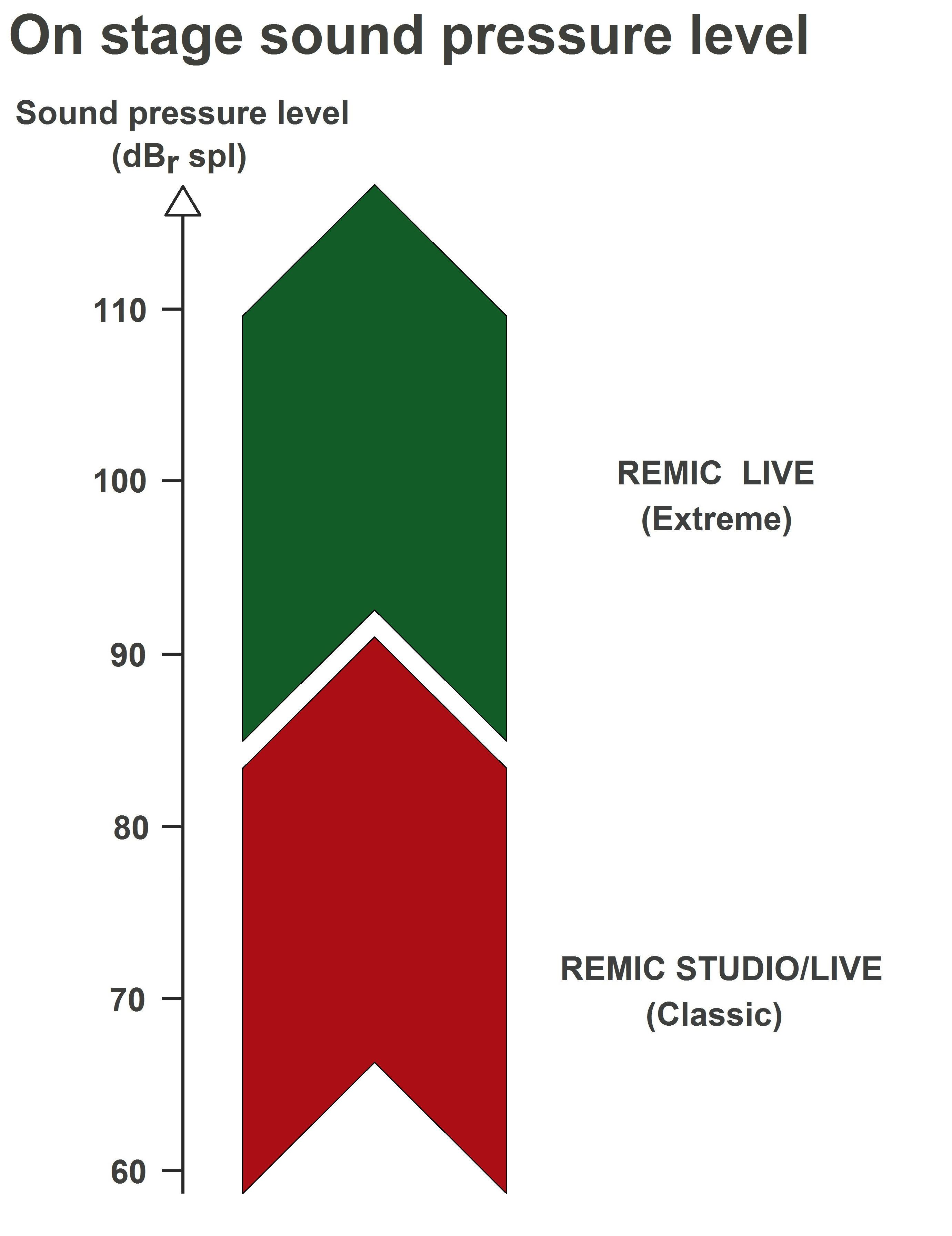
In order to avoid acoustic feedback or too much bleed from nearby instruments, an exact maximum of loudness conditions are not possible to illustrate, due to the fact that the outcome depends on a lot of factors like, the acoustic loudness of the individual instrument, the acoustic environment in which you perform (studio, small club stage or large venue), type of nearby instruments (drum kit, electrical bass and guitars), the use of stage monitors or in-ear monitors, frequency response of the stage monitors and PA system, type of music style etc.
HINT
In practice, a symphony orchestra miked up with REMIC studio/live models, can easily be amplified to a loudness of 90 dB SPL and above, without acoustic feedback occurs. All musicians use in-ear monitors.
A solo violin in a rock or folk band will have to be equipped with the REMIC “LB” Live model, in order to avoid acoustic feedback from wedged stage monitors and to suppress unwanted sounds from drums and electrical guitars at an identical loudness level of 90 dB SPL.
HOW WELL DOES THE REMICS SUPPRESS AMBIENT NOISE?
Again, here the answer will be “relative”, as it depends on a lot on factors as mentioned in the above. However, the figure below illustrates the relative degree of ambient noise suppression for the two REMIC microphone models.
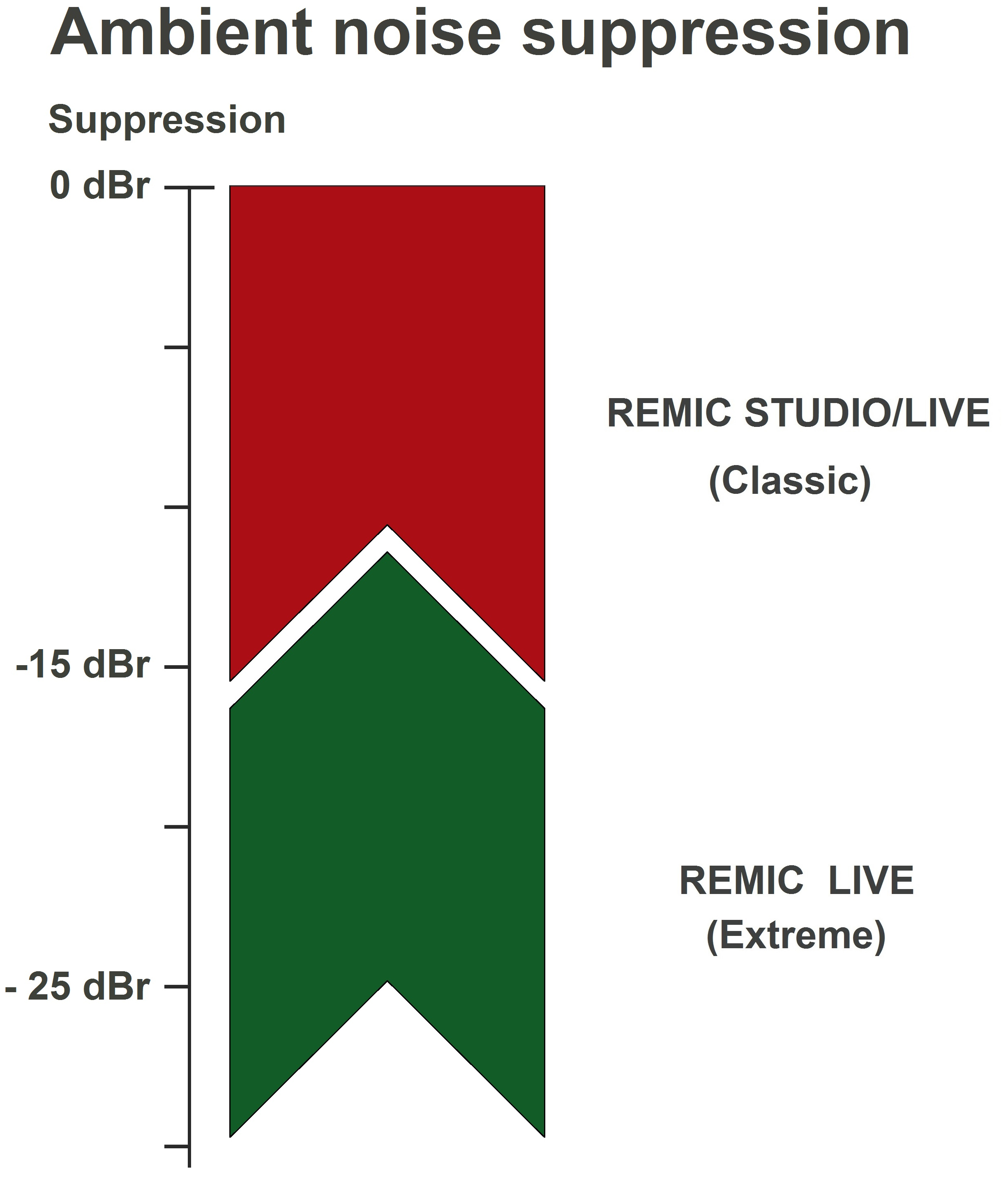
FREQUENCY RESPONSE
The frequency response, which is often displayed on a graph or chart as a curve, describes how a device responds to sound across a range of frequencies. Frequencies are measured in hertz (Hz) along a graph’s x-axis, with sound level measured in decibels (dB) along the graph’s y-axis.
In this case the Frequency Response describes the range and levels of frequencies captured by the two models of REMICs mounted on the instrument.
This is due to the fact that we have found that both the frequency response and the polar pattern of a microphone, differs dramatically from data obtained in an anechoic chamber (reflection free environment) and not mounted on the instrument versus data obtained in real life environment with the microphone mounted in close proximity to the instrument surface.
In other words, the frequency response of a microphone obtained in an anechoic chamber does not give us any information on the behavior of the microphone mounted in close proximity on the instrument when used in real life environments.
We will elaborate this topic in a later article.
Frequency responses of the two REMIC microphones shown in the figure below are only guidelines, as these responses varies from instrument to instrument. In both cases the REMICs are mounted on the instrument (a violin).
RED figure is the REMIC Studio/Live (Classic) model and the GREEN figure is the REMIC Live (Extreme) model.
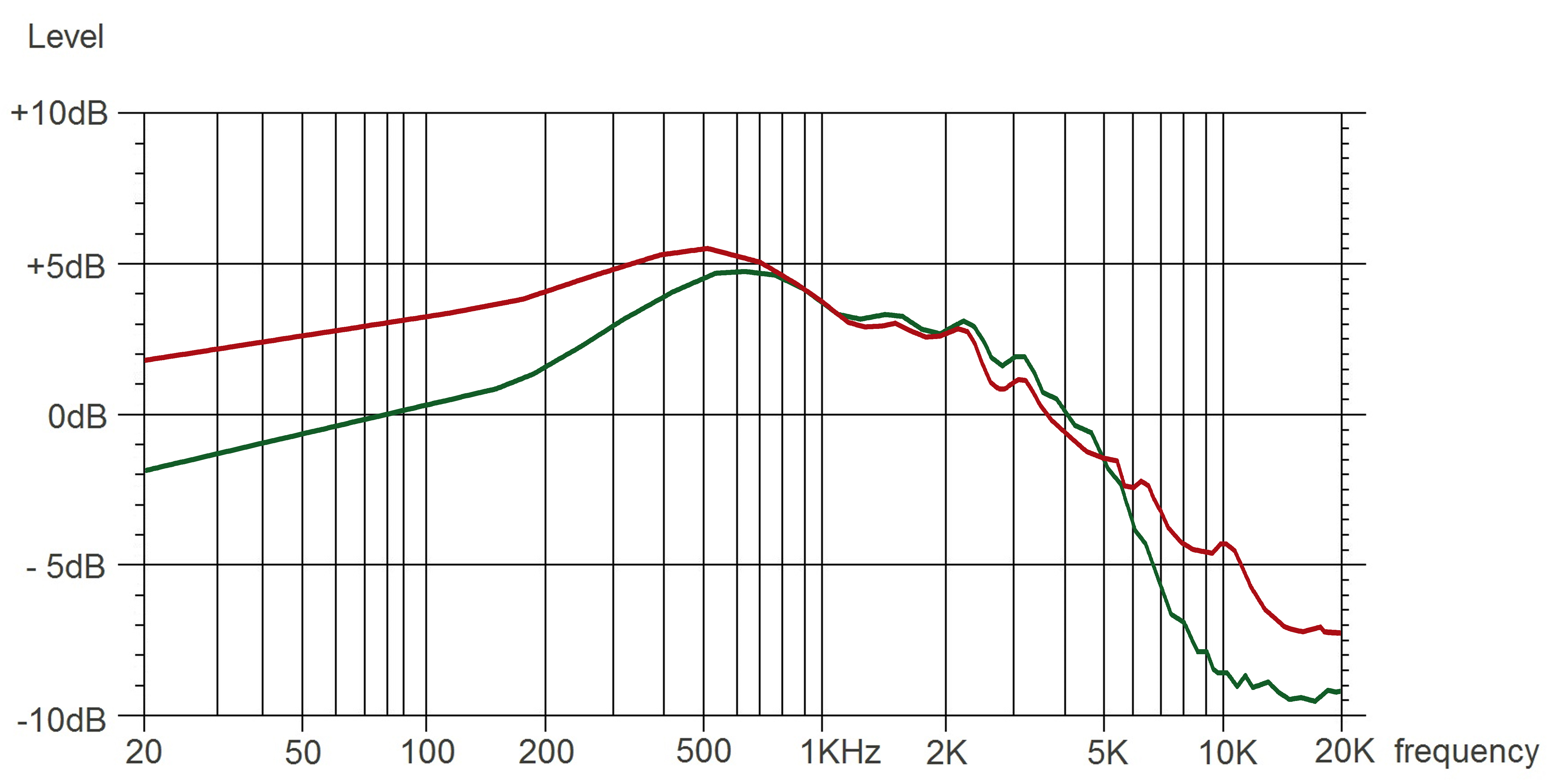
(Frequency response obtained with a REMIC microphone mounted on the instrument (violin). The frequency graphs illustrate the average response – without peaks and transients).
TONAL BEHAVIOR OF THE INSTRUMENT (VIOLIN)
It is essential to the development of instrument specific microphones to know about the tonal behavior of the instrument itself and in order to fully understand the frequency responses illustrated in the above chapter, we need to take a closer look at the tonal behavior of the instrument as well as the human hearing response.
The frequency response of the human hearing is anything but linear and also changes sensitivity to the frequencies depending on loudness, also called “dynamic frequency response”. Instrument makers (luthiers) have designed this group of instruments in a way that they compensate (to some degree) for this non-linearity in order for the human brain to recognize any of the fundamental tones of e.g. a violin as equal in loudness.
In other words; The tonal response of e.g. a violin is designed to ensure that each single tone played on the instrument, from the lowest tone to the highest tone, will sound equal in loudness.
The figure below illustrates the frequency response of a violin in comparison to the human hearing response.
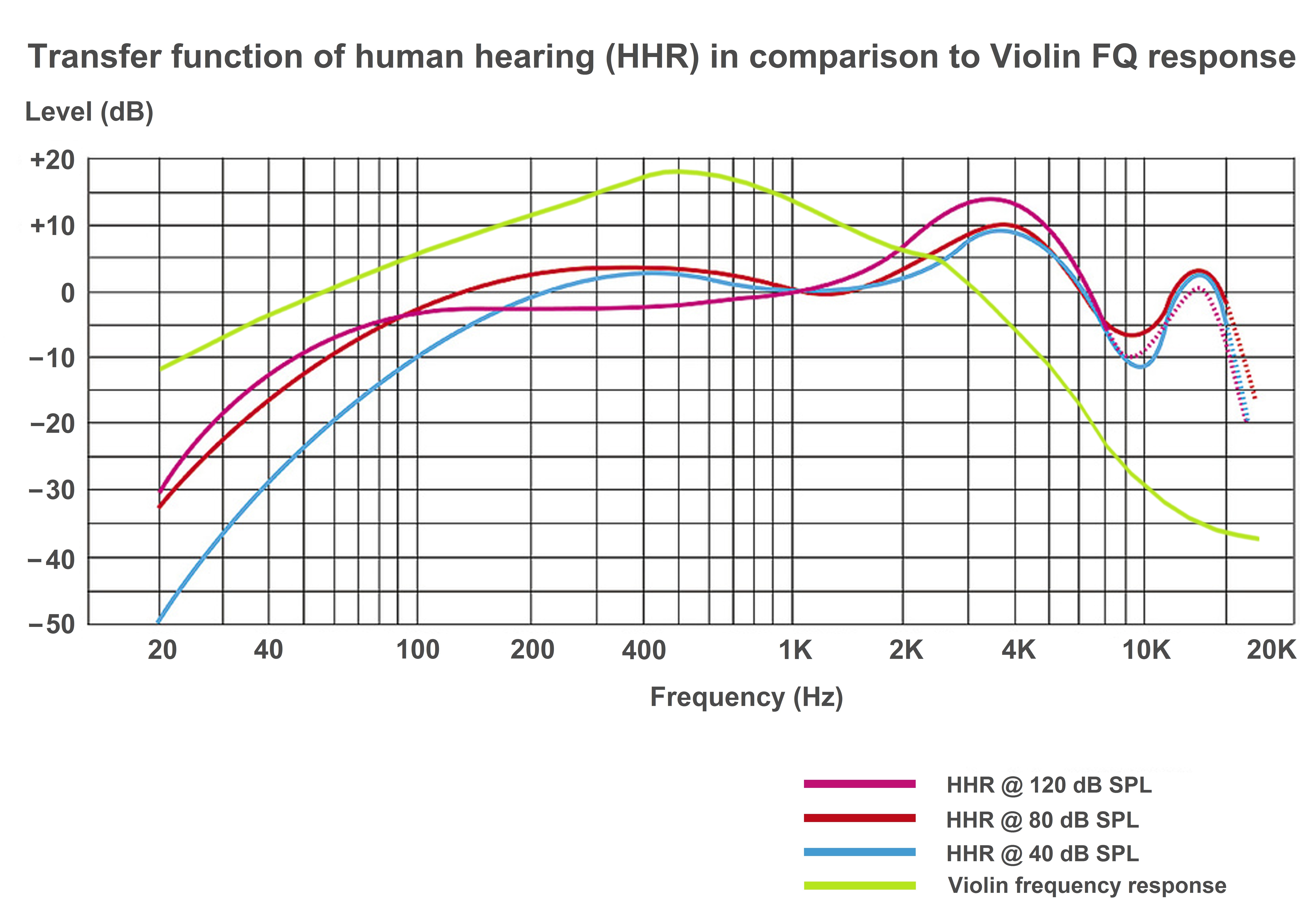
As illustrated in the figure above, the frequency response of the violin (light green line), compensates for the natural loss of frequency response in the region below 2 kHz.
In general, the human hearing ranges from very low frequencies at just 20 Hz, all the way up to very high frequencies at around 20 kHz. The individual hearing among humans varies between these two extremes.
As the overall tone or timbre of an acoustic instrument depends on many factors, we have gathered some of the most commonly known.
THE RESONANCES (Shaping Tone and Timbre)
The sound of an acoustic instrument consists of a variety of resonance frequencies. Even a single tone of a violin, that we experience as a “solo tone”, carrying one frequency (so it seems), in fact consists of hundreds of resonance frequencies.
The composition of these resonances differs from instrument to instrument and forms a unique tonal fingerprint of the individual instrument. This is e.g. why no two violin sound exactly the same.
Just like the differences in human voices, we all have our own unique set of resonances, which makes us able to distinguish one person from another. A mother can easily tell if it is her baby crying or not, simply because one specific tone of crying carries one unique set of resonances.
The overall pattern of resonance levels and structure can easily be altered by change of playing technique e.g. on a violin you can play the bow closer to the bridge and “sharper” tones arises, due to the fact that more higher overtones are generated this way.
If you on the other hand are playing the bow close to the end of the fingerboard (away from the bridge), less higher overtones are generated and “softer” tones appears.
Another way of changing the resonance pattern is by changing strings. Different brands, thickness of the strings and the composition of materials that the strings are made of changes the tension of the soundboard, which changes the resonance pattern, as well as different strings having their own sustain (ring out) pattern.
This is the reason that some artists use a mix of different brands of strings in order to achieve the desired tone or timbre.
The figure below illustrates the most dominant resonances (peaks and valleys) of a violin in general.
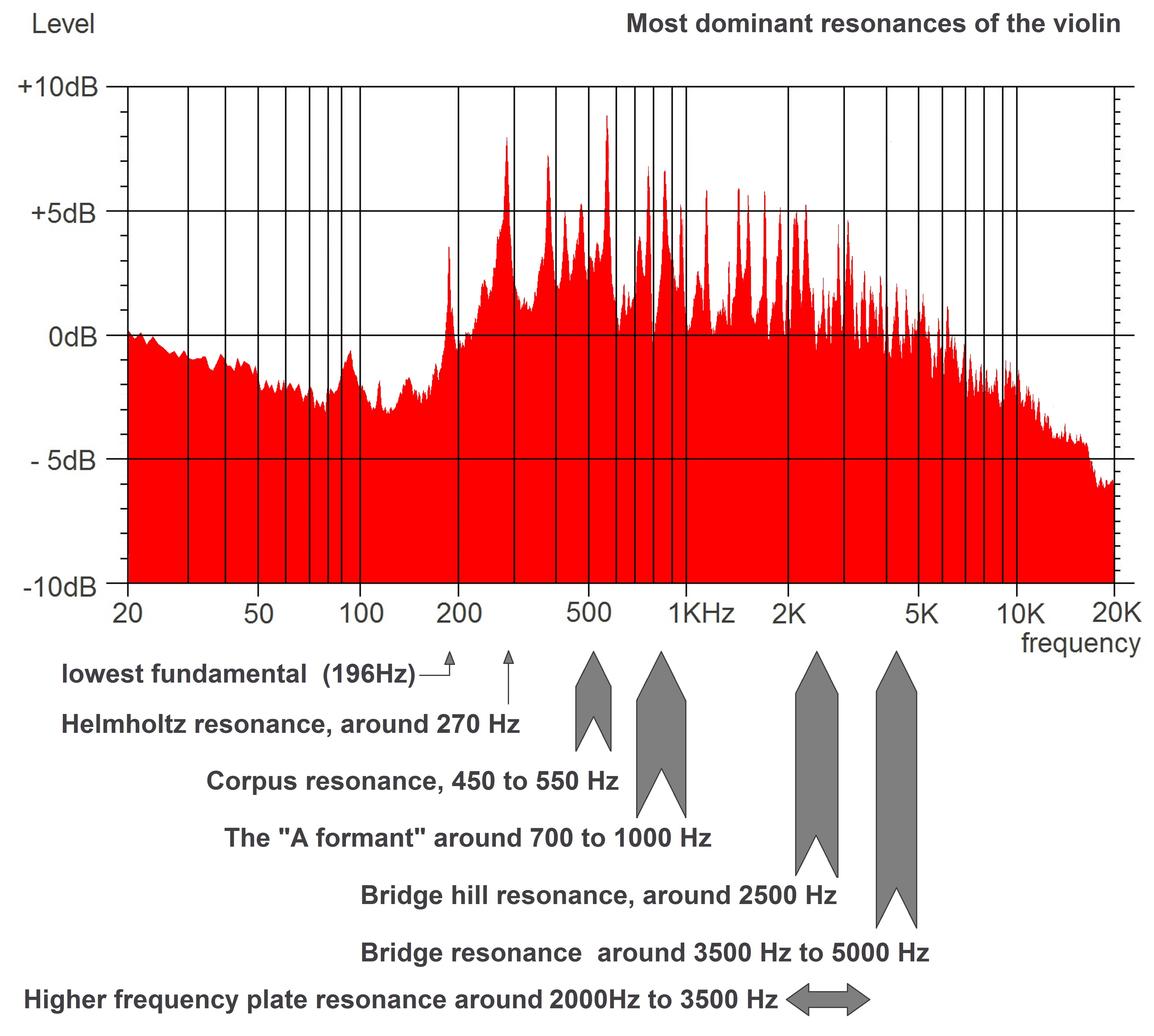
If you should have any questions, comments or simply wants to share experiences, you are welcome to join
the “REMIC MICROPHONES user community”
Related articles
Any publication by REMIC MICROPHONES on this website may include technical inaccuracies or typografical erros. Changes may frequently be made to these publications.
